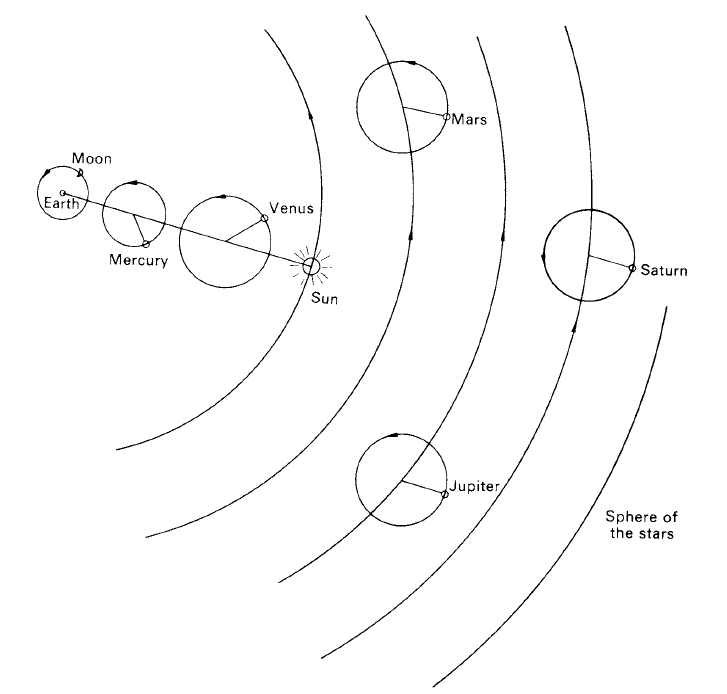
تاريخ الفيزياء

علماء الفيزياء


الفيزياء الكلاسيكية

الميكانيك

الديناميكا الحرارية


الكهربائية والمغناطيسية

الكهربائية

المغناطيسية

الكهرومغناطيسية


علم البصريات

تاريخ علم البصريات

الضوء

مواضيع عامة في علم البصريات

الصوت


الفيزياء الحديثة


النظرية النسبية

النظرية النسبية الخاصة

النظرية النسبية العامة

مواضيع عامة في النظرية النسبية

ميكانيكا الكم

الفيزياء الذرية

الفيزياء الجزيئية


الفيزياء النووية

مواضيع عامة في الفيزياء النووية

النشاط الاشعاعي


فيزياء الحالة الصلبة

الموصلات

أشباه الموصلات

العوازل

مواضيع عامة في الفيزياء الصلبة

فيزياء الجوامد


الليزر

أنواع الليزر

بعض تطبيقات الليزر

مواضيع عامة في الليزر


علم الفلك

تاريخ وعلماء علم الفلك

الثقوب السوداء


المجموعة الشمسية

الشمس

كوكب عطارد

كوكب الزهرة

كوكب الأرض

كوكب المريخ

كوكب المشتري

كوكب زحل

كوكب أورانوس

كوكب نبتون

كوكب بلوتو

القمر

كواكب ومواضيع اخرى

مواضيع عامة في علم الفلك

النجوم

البلازما

الألكترونيات

خواص المادة


الطاقة البديلة

الطاقة الشمسية

مواضيع عامة في الطاقة البديلة

المد والجزر

فيزياء الجسيمات


الفيزياء والعلوم الأخرى

الفيزياء الكيميائية

الفيزياء الرياضية

الفيزياء الحيوية

الفيزياء العامة


مواضيع عامة في الفيزياء

تجارب فيزيائية

مصطلحات وتعاريف فيزيائية

وحدات القياس الفيزيائية

طرائف الفيزياء

مواضيع اخرى
The Ptolemaic System
المؤلف:
A. Roy, D. Clarke
المصدر:
Astronomy - Principles and Practice 4th ed
الجزء والصفحة:
p 150
7-8-2020
1974
The Ptolemaic System
The main theory of the Solar System left by the Greeks to post-Roman Europe was a geocentric one. It was given in Ptolemy’s Almagest and so bears his name. Its acceptance by astronomers lasted about 15 centuries.
The Ptolemaic theory sought to describe the apparent movement of all the heavenly bodies and indeed predict their future positions. It did so successfully; all the apparent motions of the Sun, Moon, planets and stars were adequately accounted for. In figure 1 the main features of the Ptolemaic System are sketched.
The Earth was the fixed centre of the Universe. The stars were fixed to the surface of a transparent sphere which rotated westwards in a period of one sidereal day.
The Sun and the Moon revolved about the Earth.
The large circles centred on the Earth were called deferents and the small circles centred on the large circles or on the line joining Earth and Sun were called epicycles. The planets moved in the epicyclic orbits whose centres themselves moved in the directions shown. Because Mercury and Venus were never seen far from the Sun (they were always evening or morning objects), the centres of their epicycles were fixed on the line joining Sun to Earth. To agree with observation, the radii joining Mars, Jupiter and Saturn to the centres of their epicycles were always parallel to the Earth–Sun line.
It is worth noting at this point that errors in the descriptions and diagrams of Ptolemy’s System by some modern commentators reveal an unjustified contempt for a theory that was remarkably successful in accounting for the known phenomena of the celestial sphere. This basic theory was indeed a good first approximation to the observed behaviour of the heavenly bodies. Further modifications improved the ‘fit’. For example, to account for some of the observed irregularities in the planets’ motions, it was supposed that the deferents and epicycles had centres slightly displaced from the Earth’s centre and the deferent circles respectively. Slight tilts were given to some of the circles.

Figure 1. The Ptolemaic System.
When the Arabian astronomers of the Middle Ages accumulated more accurate observations of the planets, they found that the Ptolemaic theory had to be modified still further, epicycles being added to the epicycles until the system became cumbersome and, to some at least, unconvincing.
 الاكثر قراءة في مواضيع عامة في علم الفلك
الاكثر قراءة في مواضيع عامة في علم الفلك
 اخر الاخبار
اخر الاخبار
اخبار العتبة العباسية المقدسة

الآخبار الصحية















 قسم الشؤون الفكرية يصدر كتاباً يوثق تاريخ السدانة في العتبة العباسية المقدسة
قسم الشؤون الفكرية يصدر كتاباً يوثق تاريخ السدانة في العتبة العباسية المقدسة "المهمة".. إصدار قصصي يوثّق القصص الفائزة في مسابقة فتوى الدفاع المقدسة للقصة القصيرة
"المهمة".. إصدار قصصي يوثّق القصص الفائزة في مسابقة فتوى الدفاع المقدسة للقصة القصيرة (نوافذ).. إصدار أدبي يوثق القصص الفائزة في مسابقة الإمام العسكري (عليه السلام)
(نوافذ).. إصدار أدبي يوثق القصص الفائزة في مسابقة الإمام العسكري (عليه السلام)


















